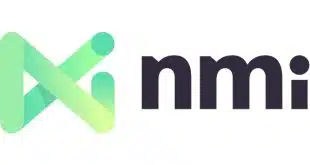The share of bills consumers pay the old-fashioned way via the regular mail continues to decline, according to the U.S. Postal Service's most recent annual study about what goes through the mails. But despite the gains of electronic bill payments, the availability of free bill-pay service at most banks may be slowing what had been a rapid run-up in the volume of electronically processed bill payments as banks dropped their fees. As a result, billers likely will continue to send many paper bills and consumers will pay them by mail for the foreseeable future. Results from the Postal Service's recently released Household Diary Study for fiscal year 2007 show the percentage of bills paid by electronic methods?primarily automatic deductions from checking accounts, and the Internet?increased from 19% in 2003 to 32% in 2007. In contrast, bills paid by mail decreased from 74% to 62% of total payments during the same time. Looked at another way, paper bill payments now account for less than a quarter of what the Postal Service calls “transactions mail”?a category that includes bills, statements, confirmations, orders, and rebates. “Electronic diversion continues to erode the volume of mail payments in favor of online payments, automatic deductions from bank accounts, and other electronic methods of bill payment,” says the survey report. “As a result, the share of bills paid by mail dropped from 25.3% of total mail transactions in 2005 to 23.6% in 2007.” The results came from data approximately 5,200 participating households compiled in diaries for tracking their incoming and outgoing mail of all types. Reporting households on average paid just 0.1 bills per month through the Internet back in 1998, but in 2007 paid 1.9 online per month. Respective figures for automatic deductions and physical mail were 0.4 and 8.2 in 1999 and 1.4 and 7.5 in 2007. Today, some 53% of households use automatic deductions and 30.1% use the Internet for bill pay. Since 2005, the average number of bills paid through the Internet has increased by 46%, the report says. But 92.4% of households still use the mails to pay bills, and the easy fruit may have been picked when it comes to Internet bill pay. “The growth is not accelerating as it used to be,” says Ron Bergamesca, executive vice president and general manager of the community-bank and credit-union services division at Chantilly, Va.-based electronic bill-pay technology provider Online Resources Corp. Bergamesca explains that while Online Resources is still seeing consistent 20% increases in volume, the rapid gains that occurred from 2004 into 2007 as banks made bill pay free through their online-banking sites are largely over because free pricing is now nearly universal. An Online Resources survey last fall of about 10,000 consumers who used financial institutions' home-banking sites but didn't pay bills electronically found that the biggest impediment to bill pay was lack of knowledge about such services, Bergamesca says. And since consumers do know that paying bills by mail works, financial institutions also need to overcome consumer inertia as part of their awareness campaigns. “The compelling market challenge for financial institutions is to make consumers wake up and use the service,” he says. “You're not solving a problem for them, but you're making life a little easier.” But all the paper will not necessarily disappear even if consumers do get bill-pay religion. Many businesses, especially small ones, still cannot accept electronic bill payments. Hence, Online Resources converts about 20% of the payments initiated at its client financial institutions' bill-pay sites to paper in order to accommodate consumers who want to pay bills from such businesses electronically.
Check Also
NMI Taps Mastercard to Power Its New Tap-to-Pay Service for Small Merchants Eyeing Mobile Payments
With an eye on small merchants, payment processor NMI on Thursday announced a tap-to-pay feature …



